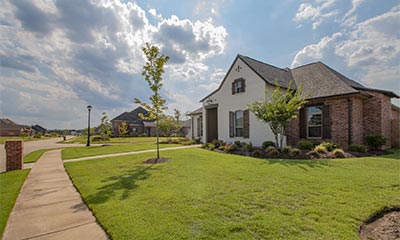Property on Lease: A Comprehensive Guide to Leasing Real Estate
Leasing property has become a popular alternative to buying, offering flexibility and financial benefits. Whether you’re considering residential or commercial space, understanding the ins and outs of leasing can help you make an informed decision. This article will explore what leasing entails, its benefits, the types of leases, and essential factors to consider before signing a lease agreement.
What is a Lease?
A lease is a contractual agreement in which a property owner (landlord) grants a tenant (lessee) the right to use their property for a specified period in exchange for regular payments, usually in the form of monthly rent. Unlike buying, leasing does not give the tenant ownership rights, but it provides exclusive usage rights under agreed-upon terms.
Types of Leases
Residential Lease
Residential leases apply to homes, apartments, and other living spaces. Typically lasting from six months to a year, these leases can offer flexible options, like month-to-month renewals after the initial term.Commercial Lease
Commercial leases cover spaces like offices, warehouses, and retail outlets. They often have longer terms than residential leases, lasting three to ten years, with specific terms about property use, modifications, and tenant responsibilities.Short-term and Long-term Leases
Short-term leases usually last less than a year, making them suitable for people who need temporary housing or flexible workspaces. Long-term leases benefit stability and lower monthly rates, though they may come with early termination penalties.Triple Net Lease (NNN)
Common in commercial leases, a Triple Net Lease means the tenant is responsible for rent and additional expenses such as property taxes, insurance, and maintenance. This setup can benefit landlords by reducing their financial responsibility for property upkeep.
Advantages of Leasing Property
Lower Initial Investment
Leasing doesn’t require a large down payment like purchasing a property does, making it more accessible to those with limited funds. Security deposits are typically much smaller than a down payment.Flexibility
Leasing allows you to change properties with ease, ideal for individuals or businesses needing flexibility. This can be a significant advantage for startups or individuals with uncertain plans.Limited Maintenance Responsibility
Many lease agreements place the bulk of maintenance responsibilities on the landlord. This is particularly beneficial for tenants who prefer a hands-off approach to property upkeep.Tax Benefits for Businesses
Commercial tenants can often write off lease payments as business expenses, making leasing financially advantageous.
Key Considerations Before Leasing a Property
Location and Accessibility
Choose a property in a location that suits your personal or business needs. Proximity to amenities, transportation links, and customer or client bases is crucial for commercial leases.Lease Duration and Renewal Terms
Ensure the lease term aligns with your needs. Some leases have automatic renewal clauses, while others allow renegotiation. Confirm any penalties for breaking the lease early.Maintenance Responsibilities
Clearly define who is responsible for repairs and maintenance. In some leases, especially NNN leases, tenants cover maintenance costs, while in others, landlords handle major repairs.Rent Increases and Escalation Clauses
Some leases contain escalation clauses, which allow rent adjustments over time. Understanding these clauses is essential to anticipate future financial obligations.Legal Terms and Protections
Lease agreements include legal terms like subletting restrictions, dispute resolution methods, and eviction procedures. It’s wise to consult a lawyer or real estate professional to clarify complex terms.
Steps to Secure a Property Lease
Determine Your Budget
Calculate how much you can afford in monthly rent, factoring in possible additional costs like utilities or maintenance.Research and Shortlist Properties
Look for properties that meet your requirements. Contact property managers or landlords to inquire about terms and schedule viewings.Review the Lease Agreement Carefully
Read the lease agreement thoroughly to understand all terms and obligations. Be sure to ask questions or request modifications if certain clauses are unclear or unfavorable.Negotiate Lease Terms if Needed
Don’t hesitate to negotiate lease terms. Landlords may be open to adjusting clauses such as the rent amount, security deposit, or renewal options.Sign the Lease and Move In
Once all terms are agreed upon, both parties sign the lease. Pay the security deposit and any initial fees, then prepare to move in according to the lease terms.
Final Thoughts
Leasing a property on lease can be a practical and cost-effective solution for individuals and businesses. By understanding the different types of leases, advantages, and factors to consider, tenants can make informed decisions that align with their financial and lifestyle goals. Whether you’re looking for a temporary home or a long-term business space, taking the time to research and evaluate your options will ensure a positive leasing experience. For anyone exploring the benefits of securing a property on lease, a well-informed approach can make all the difference in finding the right fit.


Comments